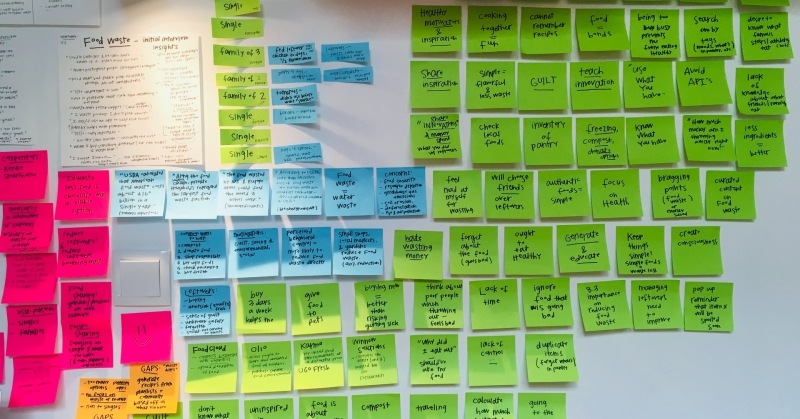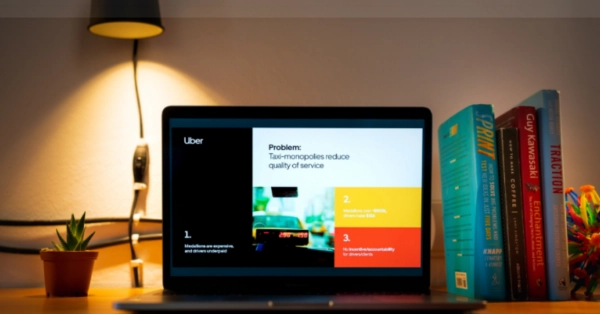“Creativity arises from our ability to see things from many different angles.” Think outside the box may be a cliché, but too often we turn any issues over and over in our minds without finding an innovative solution for them. That is because we tend to do all problem solving in the same way, whether that means making a pros-and-cons list or calling mom for advice.

One of the many ways in which our mind attempts to make life easier is to solve the first impression of the problem that it encounters. Like our first impressions of people, our initial perspective on problems and situations are apt to be narrow and superficial. We see no more than we have been conditioned to see — and stereotyped notions block clear vision and crowd out imagination. This happens without any alarms sounding, so we never realize it is occurring.
Once we have settled on a perspective, we close off but one line of thought. Certain kinds of ideas occur to us, but only those kinds and no others. What if the disabled man who invented the motorized cart had defined his problem as: “How to occupy my time while lying in bed?” rather than “How to get out of bed and move around the house?”
Entrepreneurship is a highly creative process, involving experiential techniques as entrepreneurs test ideas, pivot, and test again. For this reason, entrepreneurs need to be intentional with creativity and experimentation.
Creative Thinkers in Action:
Jeff Bezos, founder and CEO of Amazon.com: “If you double the number of experiments you do per year, you’re going to double your inventiveness. The thing about inventing is you have to be both stubborn and flexible, more or less simultaneously. If you are not stubborn, you will give up on experiments too soon. And if you’re not flexible, you’ll pound your head against the wall and you won’t see a different solution to a problem you’re trying to solve.”
Marissa Mayer, president and CEO of Yahoo and former vice president of search products at Google: “The ‘Googly’ thing is to launch it [a product] early on Google Labs and then iterate, learning what the market wants — and making it great. The beauty of experimenting in this way is that you never get too far from what the market wants. The market pulls you back.”
James Dyson, founder of Dyson: “We are all looking for the magic formula. Well, here you go: Creativity + Iterative Development = Innovation.”
Creativity is the ability of imagination. Imagination leads someone to reach never before explored areas. In business terms, imagination alone is what is known as ”thinking outside the box”. Using imagination, one can put aside the practical norms and think of something creative and innovative.
Outside the box thinking relates well to:
- Thinking beyond obvious things
- Considering a new perspective
- Lateral thinking
- Creative solutions
- Brainstorming
- Challenging yourself
- Daydreaming
- Embracing team ideas
- Working backwards
- Getting unstuck
- Exploring
- Re-conceptualizing a problem
- Considering a worst case scenario
Outside the box thinking does NOT mean:
- Taking uncalculated risks
- Making assumptions
- Dismissing others’ opinions
- Boldly embracing change of plans
- Blindly innovating
- Improvising
- Breaking rules
- Encouraging rebel behaviours
- Making wasteful investments
- Getting defensive
The eye sees only what the mind is prepared to comprehend.
Henri-Louis Bergson
Different Perspective
Genius often comes from finding a new perspective.
This illustration appears to have no meaning. If you continue looking at it from your initial perspective, you will see nothing. If, however, you step back from your computer and view the illustration from a distance or from an angle, you will see a message.

Here is another example, a classic door with rectangular frames. If you look at the X in the middle of the door and think circles instead of rectangles, circles will pop up out of nowhere.
Change the way you look at things, and the things you look at change
We do not always see what we think we see.
Creativity demands that we should approach a problem on its own terms and look for a multiplicity of ways of looking at it and a multiplicity of ways of solving it.
When confronted with a problem, we are taught to analytically select one approach, excluding all others and work within a clearly defined logical direction to solve the problem.
Why thinking outside the box is a need and not just a nice to have?
Here are a few reasons:
- Questioning the status quo is a good thing.
If everyone just accepted things the way they are, then there would never be any innovation or improvement in the world.
If Thomas Edison had shrugged his shoulders and figured things were good enough the way they were with gas lamps, light bulbs and the electricity to power them might never have been developed. If he had not thought outside the box, the world could be a very dim (literally) place.
By thinking outside the box and questioning the status quo, you will constantly be considering how you could improve an experience, product or service. This allows you to keep growing -- and can lead to intelligent and forward-thinking decisions in business.
- Greater perspective.
The world can become very small if you are close-minded.
Thinking outside the box can expand your worldview, allowing you to have greater perspective on the events and happenings in your career (and in life). When you are willing to consider alternative points of view and ways of doing things, you will be more open to a variety of different points of view and potential solutions.
A greater perspective can make you more receptive to different ideas, which means that you will not be limited by a small worldview. When you are open to limitless possibilities, the possibilities are endless!
-
Higher quality work.
Super-successful companies have a different approach to company culture. For instance, consider the fashion retailer Zappos. It offers employee perks like free food, complimentary wellness services and even an on-site shoeshine service.
On the one hand, it would be easy to dismiss these things as a waste of money and a threat to the company’s bottom line. However, they take the long view. They see that by offering these benefits and perks, they attract and retain better employees. Happy and healthy employees tend to be more productive, loyal and harder-working.
By thinking outside the box with their company culture, they ultimately get a better caliber of employee and work, which makes it well worth the expenditure they put out with these offerings.
-
More creative problem solving.
When you are thinking in the box as opposed to outside of it, your career growth can be stunted. When there are a finite number of ways that things can be done also means that there is a limit to what you can achieve.
Alternatively, when you think outside the box, suddenly there are many more possibilities and opportunities. When you allow for any and every possible solution, you may in fact end up coming up with more creative ways to solve problems.
Consider Netflix, for instance. By dreaming up an alternative to the standard video store template with rentals and late fees, they were able to create a worldwide sensation.
-
Stay adaptable.
Whether you are a writer, a trader or the founder of a food truck, one thing is certain: your career will change over time. Technology, people’s tastes and all sorts of other factors are constantly evolving, and you will need to be able to change in kind to remain relevant.
Perhaps one of the most profound effects of thinking outside the box is that it will help you stay adaptable. Your mind will not be closed off to new ideas or solutions or situations, and therefore you’ll be better able to navigate the ever changing landscape of business.
























